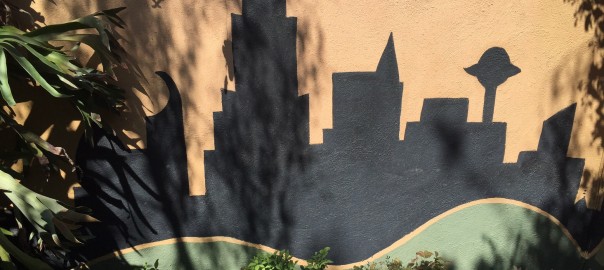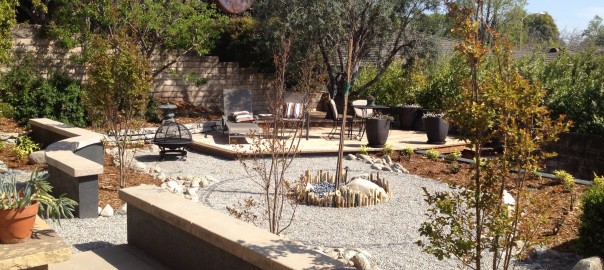April 7, 2015
During any kind of adversity we tend to grow with leaps and bounds. It may be slowly, but it is surely. Being in a severe drought offers this same opportunity to grow. How do we grow when we have less? Well, we can look at what we have that needs excessive water and make separate those things that have no real value in our lives. I have said in other posts that if the only person who walks on your grass is your gardener, then it’s time to let the grass / lawn go. This frees us, as Californians, to create a landscape that is sustainable and uniquely ours.
We must reduce our water usage by 25%. Why not make it 50%? There is nothing wrong with using water, we do not need guilt as we create something beautiful. By using water wisely we rid ourselves of that guilt…. and become part of a community of thinkers.
So, how do we create a replacement for grass? Can we rethink a false status symbol? YES!!! There are countless “soulutions”, but typically the front garden is part of the street-scape, an unused asset by the homeowner. Let’s talk about what grass does for a landscape. It is a mass of green, typically a fine texture that conjures a feeling of park like relaxation. This is an opportunity to redefine how our homes look and feel. Why not play up that park feel and create spaces for neighbors to want to congregate… build community through gardens. This can be done with thoughtful design.
During the drought we must protect our trees by deep watering them. This is a solution to a problem we all know we have—-tree roots that stay close to the surface. The trees tend to fall over during Santa Ana Winds…. or heavy rains. Trees planted in grass become use to irrigation, they spread their roots at the surface because that is where the water is. By eliminating grass and having to water it, we have found a solution to those shallow roots. Look around, look for trees planted in grass, and look for trees planted in a field. You find that there is no bulk of surface roots in nature.
Another way we can grow during a drought is by changing our home climate. Plant groves of trees. Create shade! And, by not having surface water your trees will develop proper roots. If selected properly, trees can provide shade in the summer, warmth in the winter, seasonal color, flowers, attract wildlife and evoke that park like feeling we all love.
Finally, we can create community gardens if we plant stone fruits, citrus and other trees with edible fruits. If your neighbor has a lemon, then perhaps you plant a lime tree, an avocado tree, grapefruit, fig, pomegranate….. this is an opportunity to build relationships who also want to conserve water and have a sustainable, beautiful garden.
Stephen Swafford
Landscape Architect, Indah Bulan


